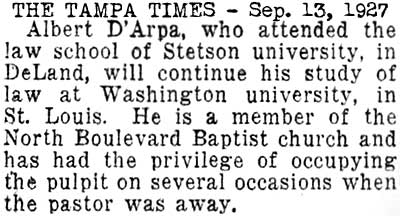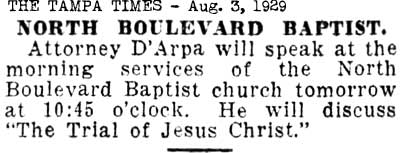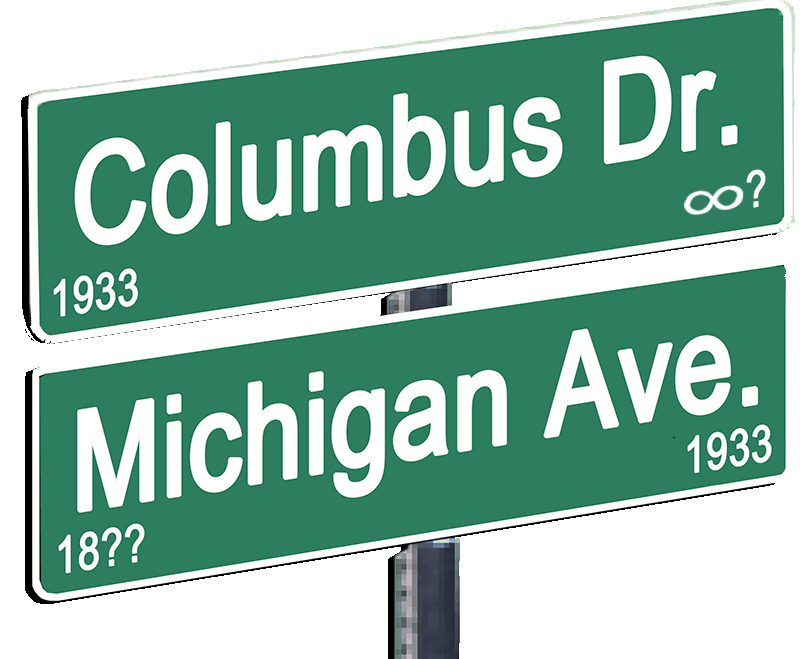|
THE
FLORIDA LAND BOOM - FLORENCE VILLA and DAVIS ISLANDS
The
Florida land boom was at a frenzied high in 1924 when
Vincent and his wife, Giuditta (Judith) Sempreviva, teamed
up with real estate developer R. C. Dotson and J. H.
Letton to plan the first real estate development in east
Tampa, east of Ybor City. They incorporated in the
name of "SUBDIVISION DEVELOPERS, INC." in
Sept. 1924. Dotson
served as
the president, Judith Sempreviva was Vice President,
Letton was treasurer, and Vincent was Secretary and a
director.
The 1924
through 1926 newspapers of Tampa buzzed with countless
numbers of articles and classified ads telling of new
subdivisions, huge sales figures, property sales and realtor
successes. In addition to Vincent's success, D. P.
Davis was all over the press with his planned development of
Davis Islands.
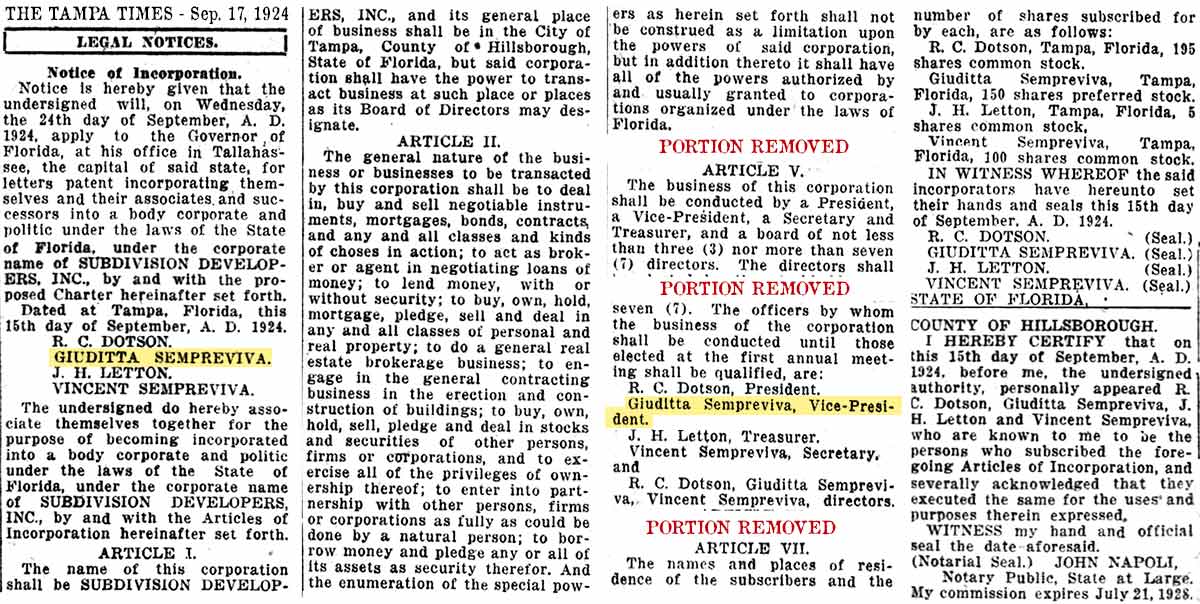
Portions of the above article have been removed, you can
read it in its entirety here. Once it opens, click
it again to see full size.
FLORENCE
VILLA EXPANDS
Originally
consisting of a sixty-acre project, forty more acres
were purchased by early October. The article is in
error concerning who was vice-president. It was
Vincent's wife, Judith, who was vice president.
Vincent was the Secretary and a director.
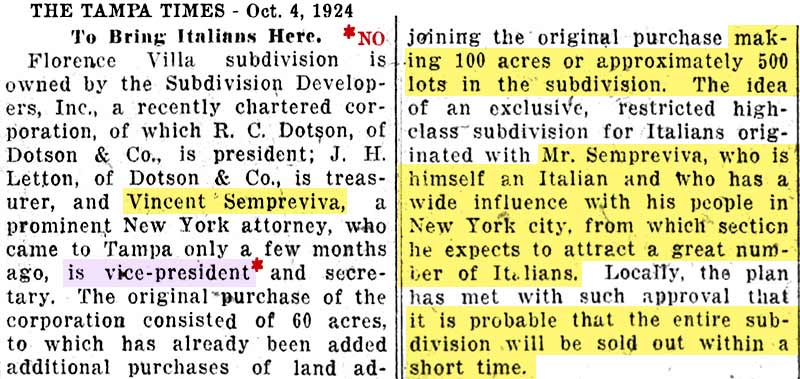
Clearly targeting the a Latin
community of Tampa, Florence Villa promised to be a
"strictly high-class subdivision, made beautiful with
touches reminiscent of Sunny Italy and Old Spain..."
It was going to have a man-made lake named Caruso Lake,
for the famous opera singer. There would be a pier
and a pavilion, and "the sweet music of the Latin race
may be played and radioed on the night breezes to every
corner of the subdivision.
Sempreviva & La Pia's
office
was located at 1723 E. Seventh Avenue in Ybor City, one
building west of the Italian Club.
Together with Dotson & Co., they were in business as
"Subdivision Developers, Inc."
1931 Sanborn Fire
Insurance map from University of Florida digital library
map collection.
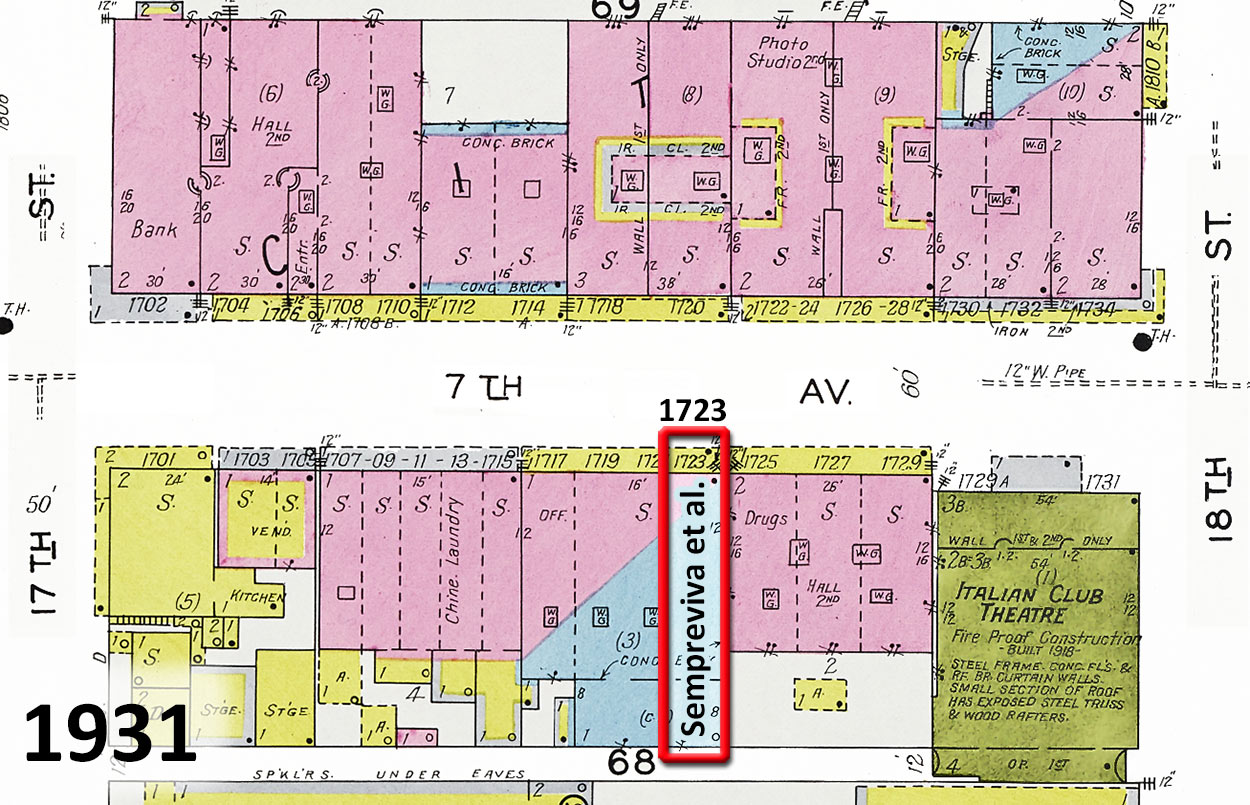
Great things were planned
for Florence Villa. It was to be "a strictly high
class subdivision" with "touches reminiscent of Sunny
Italy and Old Spain." It was to have wide streets
and avenues, a plaza with a children's park, and an
artificial lake named for the great opera singer Enrico
Caruso. A pier and pavilion was to be built on the
lake, with a sound system that played Latin music "on
the night breezes to every corner of the subdivision."
The lots were to be on
the average fifty feet of frontage and one hundred
thirty four feet deep. There would be electric lights,
hard surfaced streets, sidewalks, and shade trees.
A business section was planned for stores, cafes,
restaurants and general business purposes.
A
two-story brick edifice was planned to be the first
building constructed at Florence Villa. This ad was
arranged in one column and spanned from the top to the
bottom of the page. It has been split into two columns
here to better use vertical space.
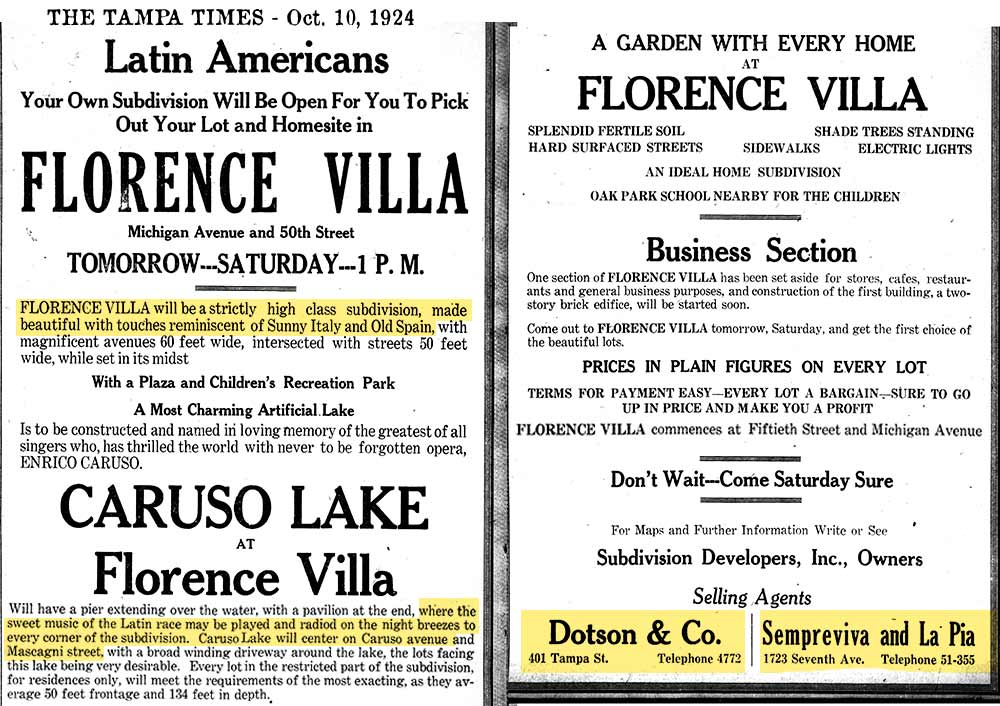
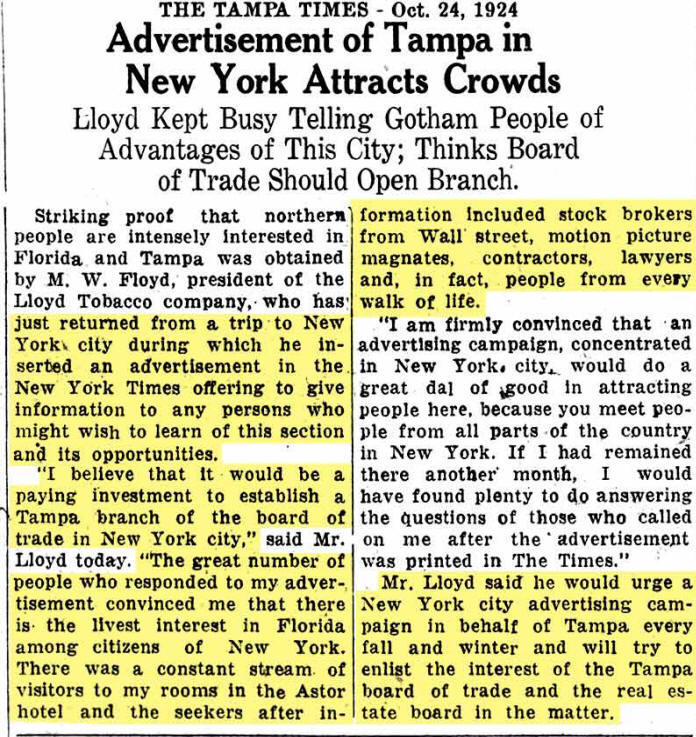
In late October of 1924, the president of a tobacco company
returned to Tampa from New York City with news that
northerners were intensely interested in Florida's land
investment opportunities. He claimed that after he
put an ad in the NY Times offering info about Florida's
land boom, a constant stream of visitors responded for
more info. This included stock brokers from Wall
St, motion picture magnates, contractors, lawyers, and
people for every walk of life. He urged Times
readers to enlist the interest of the Tampa Board of
Trade to begin a fall and winter advertising campaign in
New York City.
By Nov.
15, the construction on Florence Villa had started.
Properties had been staked out, streets were being
graded and ready for hard surfacing. Sidewalks
would soon be laid, and house construction would then
start. The ad claims many lots had been sold
and the development featured hard surfaced streets,
sidewalks and electric lights at no cost to the buyer.
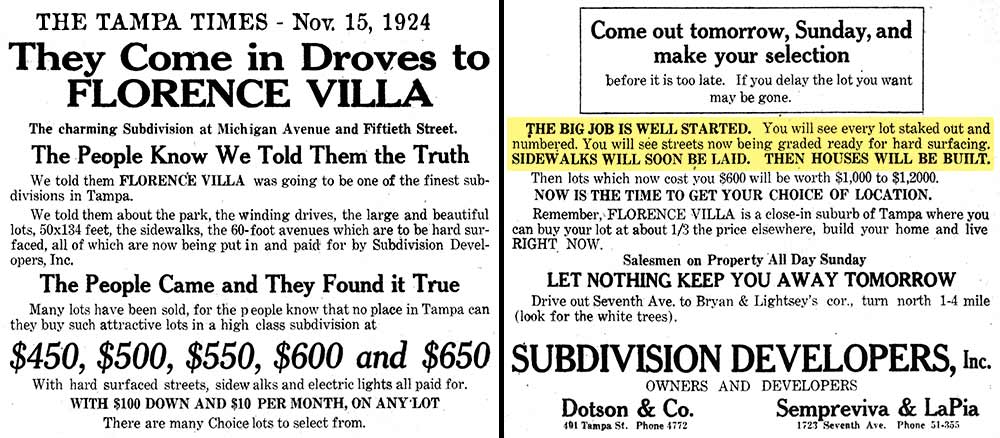
LOCATION OF FLORENCE VILLA TODAY
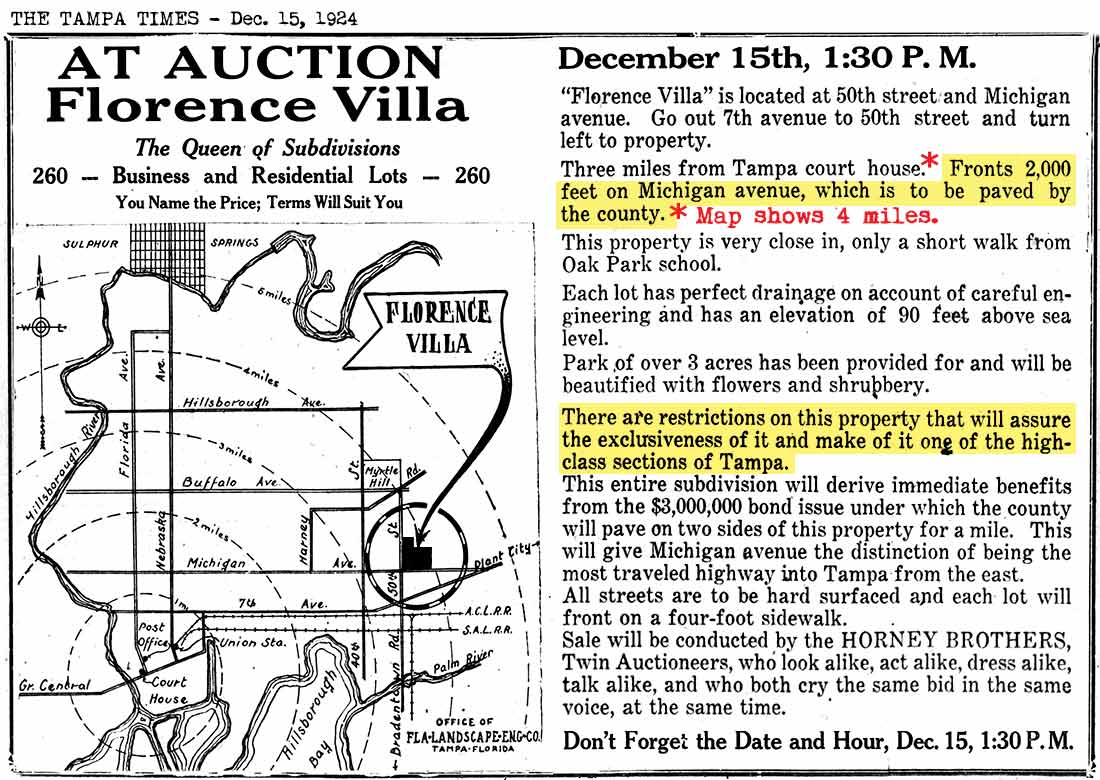
The ArcGIS map below shows a measurement of 2,000 ft.
along Columbus Drive from 50th Street ends a few feet
east of 53rd St. The Oct. 10, 1924 article is the
first to mention a planned lake but there is no mention
of a park. Later, a 3-acre park is promoted in an
ad but no mention of the lake. According to the
ArcGIS map area measurement tool, the area inside the
curving roads is 2.88 acres.
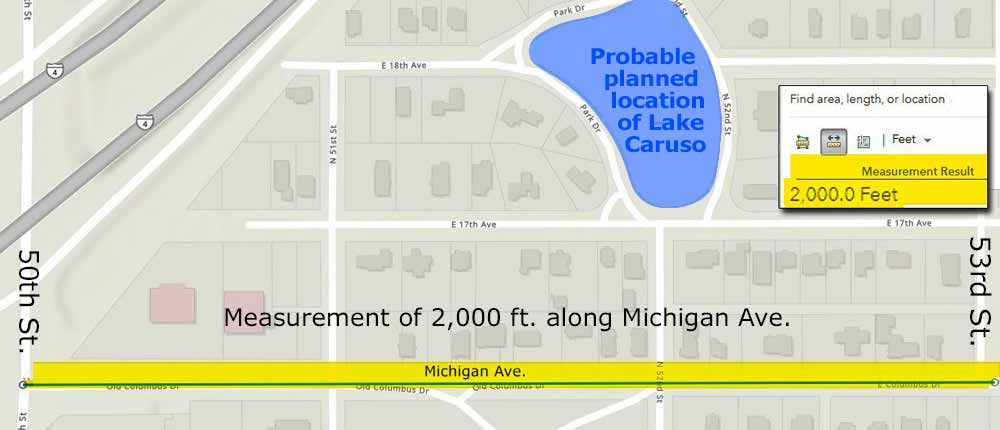
Using the same ArcGIS map to measure area, along with
knowing the general shape of the property from the 1924
ad map, the boundaries of Florence villa can be
determined with a good degree of accuracy. Later,
a promotion for a new development called GRANT PARK
mentions that it borders Florence Villa.
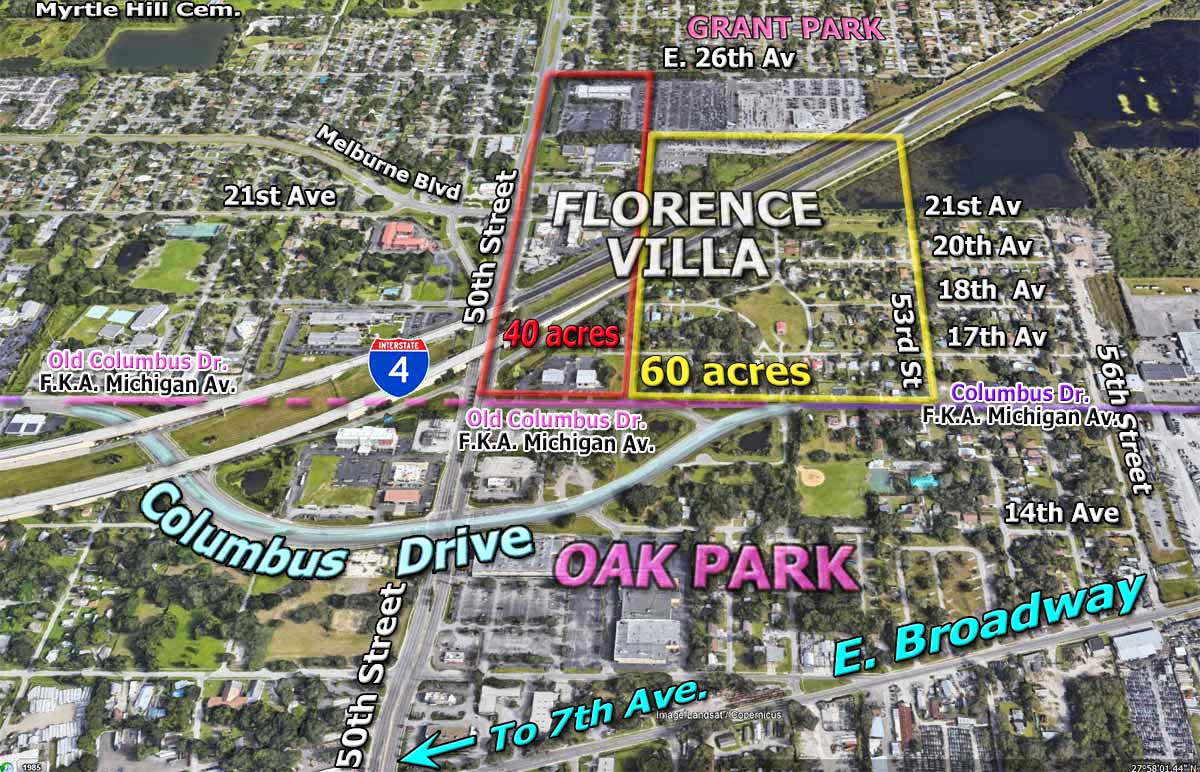
|
THE BEGINNINGS OF TAMPA
BEACH |
|
In what would be advertised within a year as just about
the greatest development to civilization since the Roman
Empire, Tampa Beach had its seed sown when this huge
real estate transaction in the article below was carried
out. The land involved is today the eastern coast
of McKay Bay and East
Bay from the Palm River within a couple of miles north
of Gibsonton, which is nearly directly across
Hillsborough Bay from Ballast Point.
The 1892 map at right
shows Hillsborough Bay before the onset of major
dredging and land filling of the 1920s. The two small grassy
islands in the bay become Davis Islands in 1926.
(Prior to this, the smaller island to the north of it
would first be cut through so ships traveling the
Hillsborough River would not have to sail around it.
The west half of it would incorporate into Davis
Islands, the east half of it would become Seddon
Island.)
SEE HARBOUR ISLAND HISTORY here at TampaPix.com.
The article claims that
the East Tampa Bay Land Co. (ETBLC) INCREASED its
holding to a total area of 2,400 acres by the purchase
of a large tract from the American Agricultural Co. of
NY. Then it says this purchase adjoins a 3,000
acre tract they already owned "on the eastern boundary" the Tamiami Trail
(Now US 41.) We can only assume the article should
have read "have increased their holdings BY 2,400 acres.
It gave the ETBLC
ownership of property on both sides of today's US 41. The
statement of the property "bisecting the eastern section
of Hillsborough Bay" may be a reference to the
purchased land running half the length of
Hillsborough Bay. |
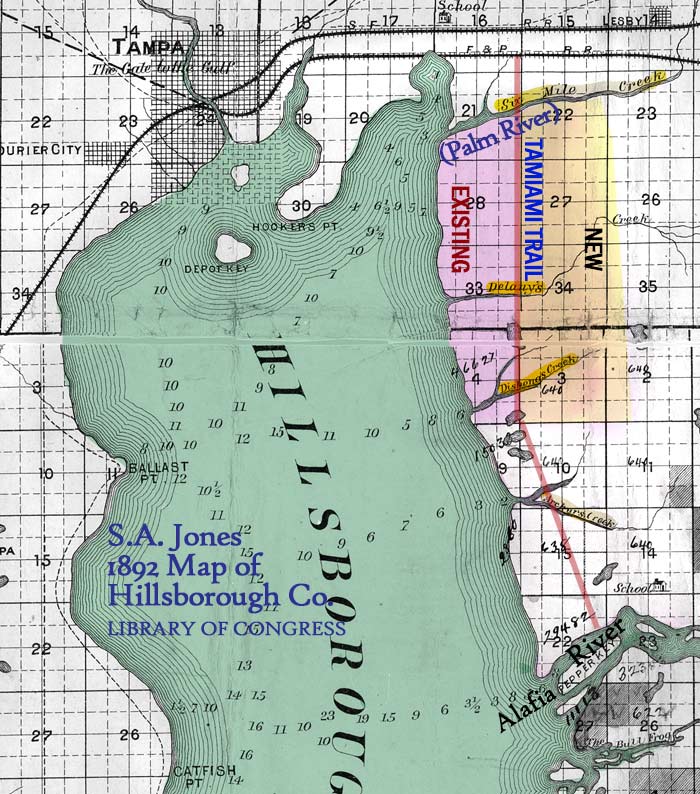 |
Among the purchasers were
Wm. F. Stovall (owner of the Tampa Tribune,) W. B. Gray,
Mrs. Florence M. Hall, and B.C. Skinner of the ETBLC,
and James F. Taylor and Earl Moore. The new
property would be handled by a company separate from the
ETBLC.
It is important to note
that this transaction came on the heels of the approval
by the citizens of Hillsborough County for the
construction of a causeway across Hillsborough Bay. Within the next week, the grand opening
ceremonies of the Gandy Bridge, the first across Tampa
Bay, would be held. SEE GANDY BRIDGE HISTORY here
at TampaPix.
The plans for the causeway
were already under way and being conducted by the ETBLC
who owned the land where the causeway would start on the
west shore of Hillsborough Bay. It was planned to
make a magnificent entrance to the new property.
When the fill and seawall were completed along the bay
front, the ETBLC would own 7,000 acres in this area. |
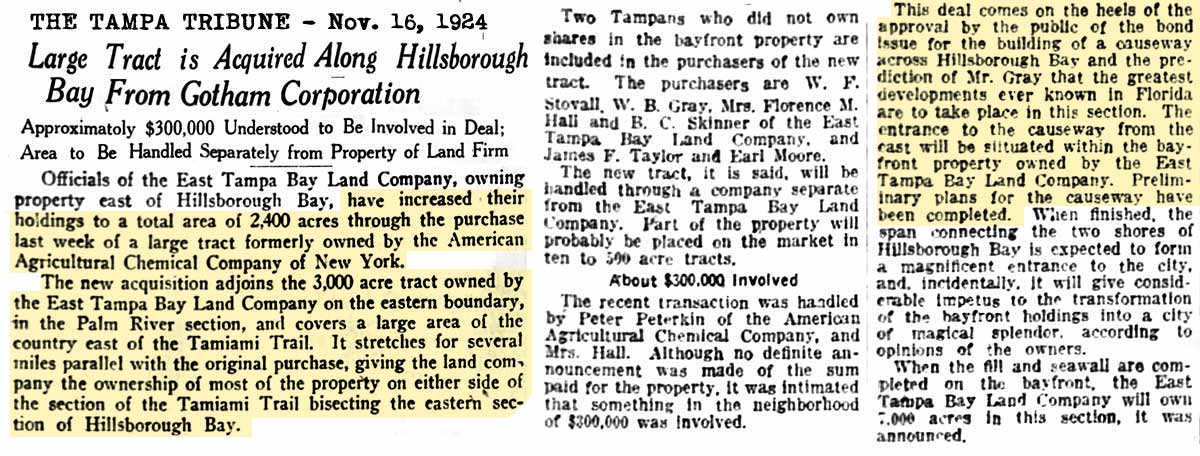
More about Tampa Beach to follow
1925
THE CAMPAIGN TO IMPROVE SEVENTH AVENUE
BY WIDENING AND PAVING
It's was this time that the east
Tampa development clubs were in the news about their
meetings of approving proposals for various improvements
to Seventh Avenue and Broadway as well as the entire
east Tampa area. None yet had the approval of the city
or the county, but this didn't seem to matter when it
came to promoting their real estate interests in the
area. Especially in the Tampa Times, articles
appeared with large headings claiming proposals had been
approved, but not mentioning by what authority until the
details were mentioned in the article. To a
reader skimming over the article titles, it would look as if
the approvals were made by city or county commissions with the
authority to approve.
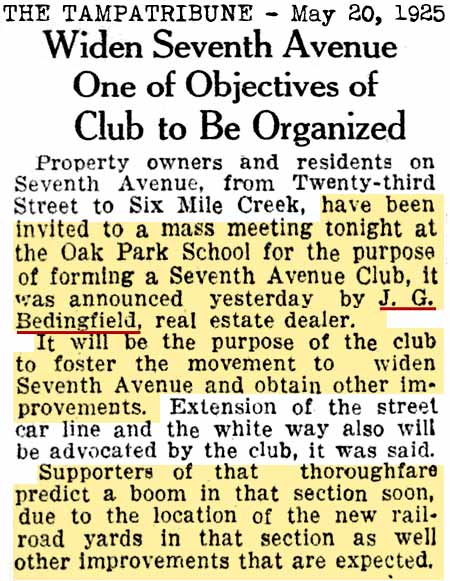
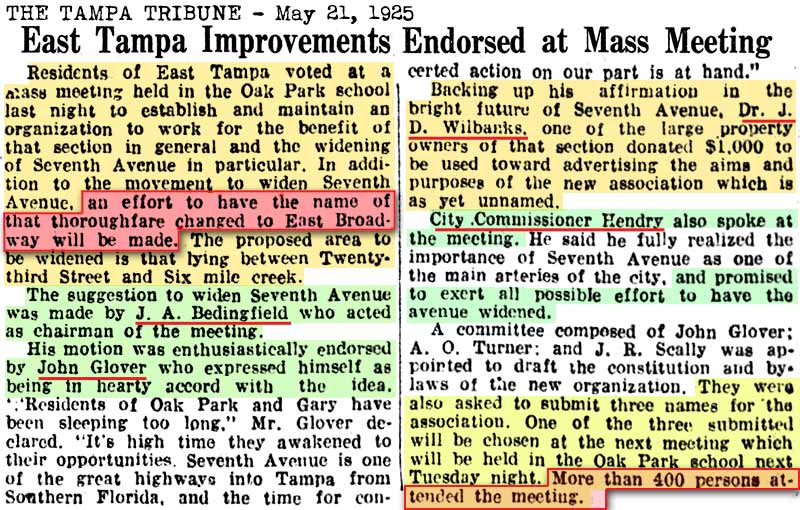
EAST BROADWAY CIVIC SOCIETY TO SPONSOR
WIDENING OF SEVENTH AVENUE FROM 23RD ST TO PLANT CITY
Support for the project would come from
membership fees. Over five hundred people attended
the meeting and pledged support. Another project
of the club was to get the Tampa Electric Co. to extend
street car or bus service from the present terminus to
Six Mile Creek. Mr. Glover pointed out that a
large number of residents of east Tampa had to walk as
far as two miles to reach the streetcar line to and from
work. Plans were also discussed concerning
encouraging manufacturing projects in the area.
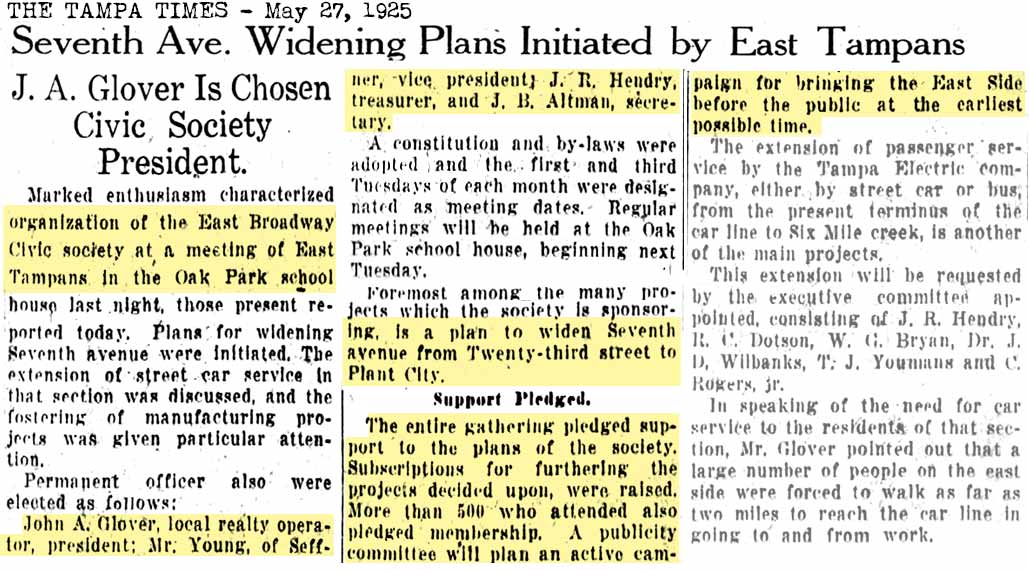
PREPARATIONS FOR DREDGING AND FILLING
THE EAST COAST OF HILLSBOROUGH BAY
These improvements were precursors to the
planning of Tampa Beach. Six-Mile Creek was the
old name of the Palm River.
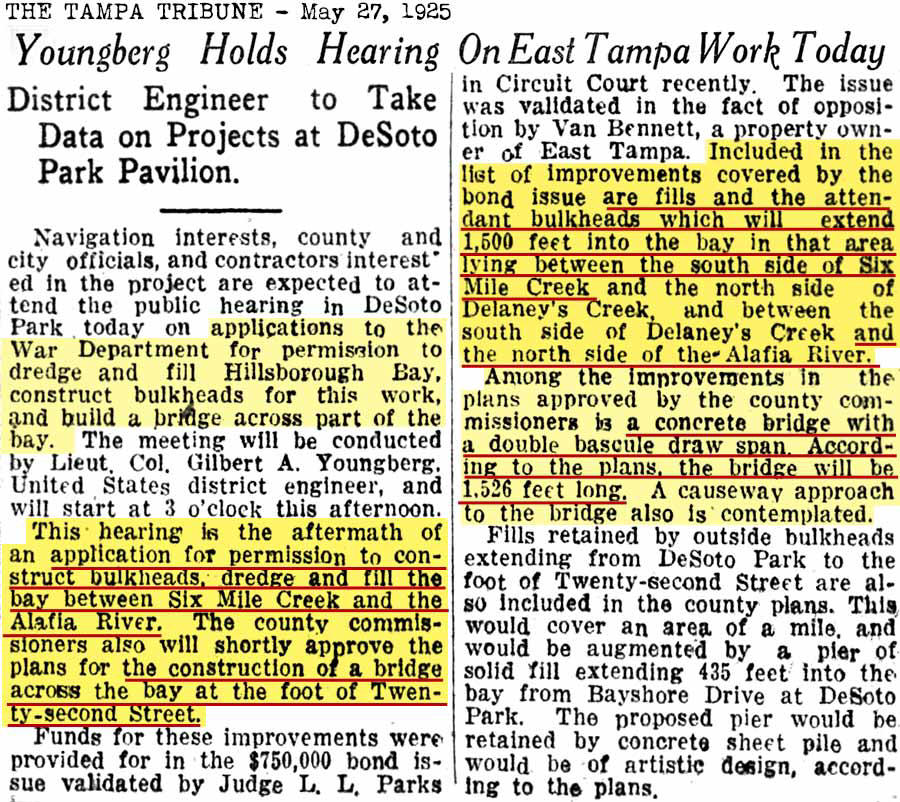 |
APPROVAL FOR PAVING, GRADING AND
CURBING OF SEVENTH AVENUE
The City Commissioners met on May 26th,
1925 and decided on having eight streets paved.
The rest of the article describes issues with the
authorization of such work due to a transition of city
administration over a period of an old law and a new
law. Approval was deferred until City Attorney
Doyle E. Carlton could issue his opinion. No
mention is made of any influence coming from the actions
of any east Tampa improvement clubs.
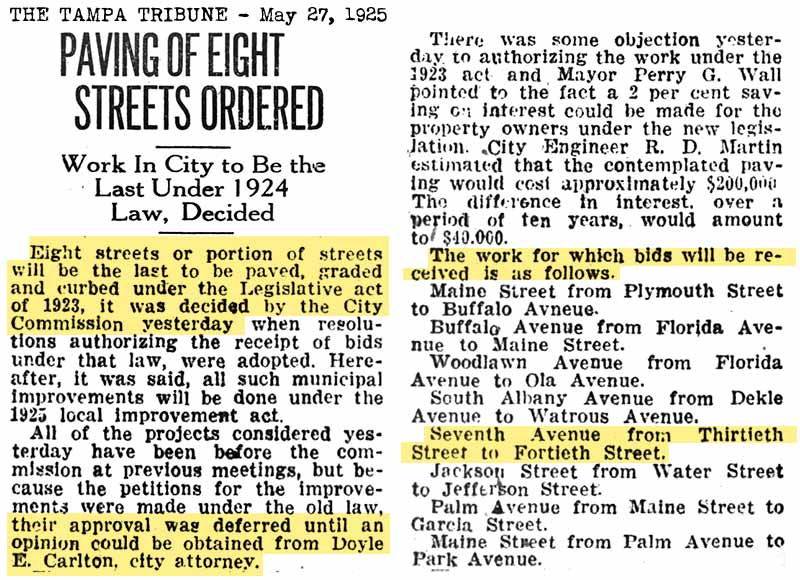
SEVENTH AVENUE CIVIC ASSOCIATION
BECOMES THE EAST BROADWAY CIVIC ASSOCIATION
The recommendation of the association's executive
committee was overridden by its members when they voted
to change the name of the association.
The club
also voted to ask the City Commission to change the name
of Seventh Avenue to Broadway but much objection was
raised at the meeting by those who had lived on Seventh
Avenue for many years.
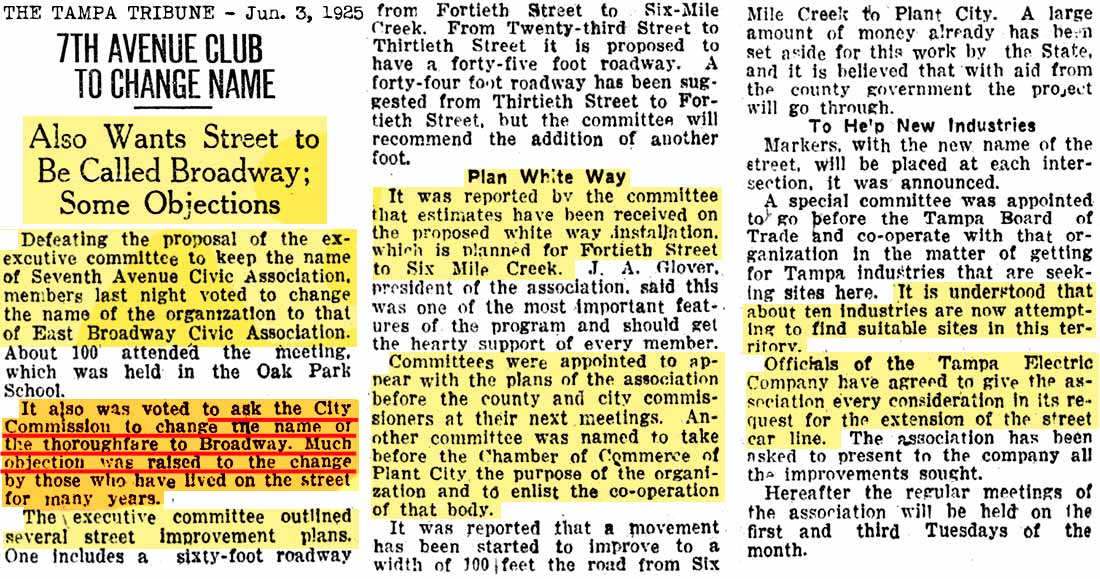
"OFFICIAL NAME OF BROADWAY IS ADOPTED" |
Whether or not the title was sloppy reporting or
intentional deception, the title and subtitle of the
article appears to claim that the official name of Seventh Avenue
was now "Broadway." But the first
paragraph of the article explains that a PROPOSAL
TO
WORK FOR THE OFFICIAL CHANGING OF THE NAME was adopted
at the club's meeting. The end of the article is written as if the City
had already adopted the name change and the only matter
left was to get the new name posted on signs along the entire
length of Seventh Avenue. This proposal was referred
to some unnamed "committee with authority to act." There
would be no committee within the club that had the
authority to change street names or signs. This was a
matter for the City and County Commissions to approve. |
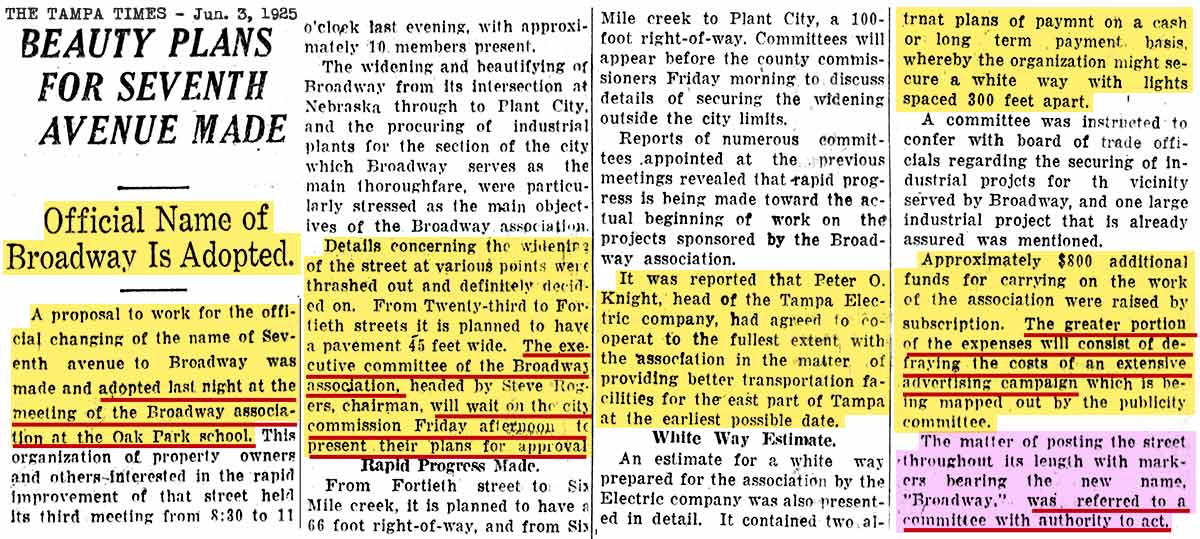
 |
| The Tribune article below describes
action taken by the County Commission to
approve plans for the widening of Seventh
Avenue. It also mentions that two
weeks earlier, the City had approved this
for the portion of the street within the
city limits, but no article has been found
for this, unless this refers to the May 27th
Tribune article "Paving Of Eight Streets
Ordered." Widening is not mentioned.
The County Commission's approval was
given at the request of committees representing the East
Broadway Civic Association. Details are then
described as widening and paving to Six Mile Creek (Palm
River) and widening with partial paving from that point
to Plant City. The rest of the article concerns
plans for other streets.
This is an important article to read
carefully because it would appear again four
days later IN THE TAMPA TIMES. |
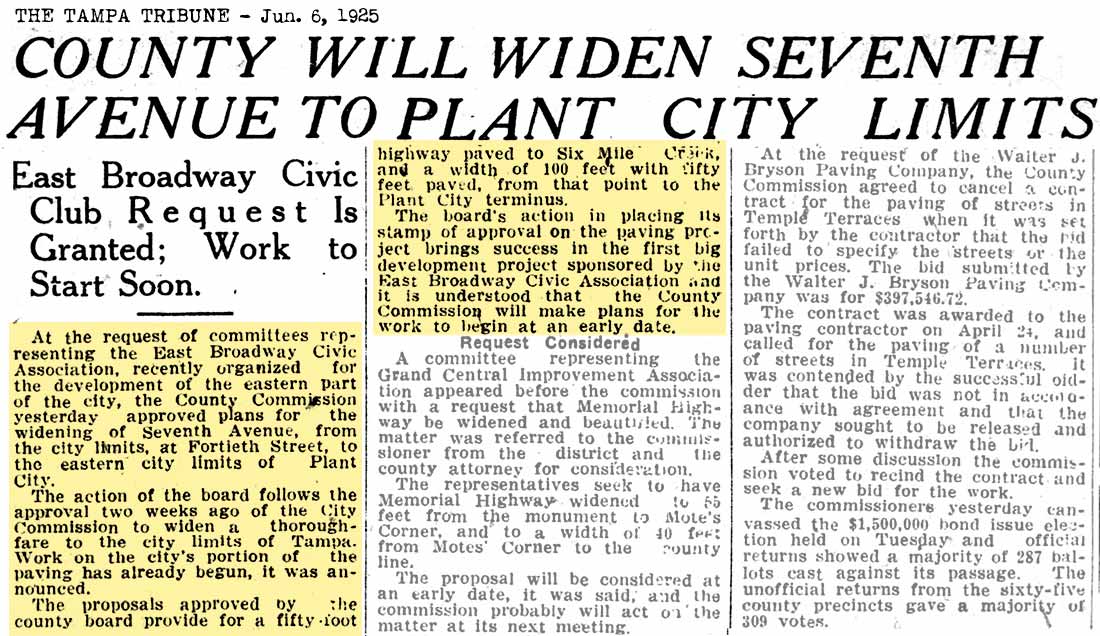
THE GRAND BROADWAY ILLUSION
In an ad that can at least be described as deceptive, the TIMES printed an ad by the East
Broadway Civic Association which contained the above
Tribune article reprinted, pointing to it as if it was
evidence that the name of Seventh Avenue has now been
changed to Broadway. The article above has been
reformatted to better fit this page; the ad below shows
it in its original format. The only part
of the article above that pertains to 7th Avenue is
highlighted, and none of it mentions anything about the
street being renamed. The request that was granted
was the widening project.
The installation of an electric White Way had no
approval whatsoever by the city or the county.
Point #3 shows only that an estimate of costs had been made
by the civic association. ("White Way" was the
term being used all over the country in the 1920s as
more main thoroughfares began to install electric street
lighting. In comparison to gas lights, the
electric lighting lit up the streets as no one had ever
seen before, like a great white way.
This was clearly an ad to boost sales of property along
Seventh Avenue.
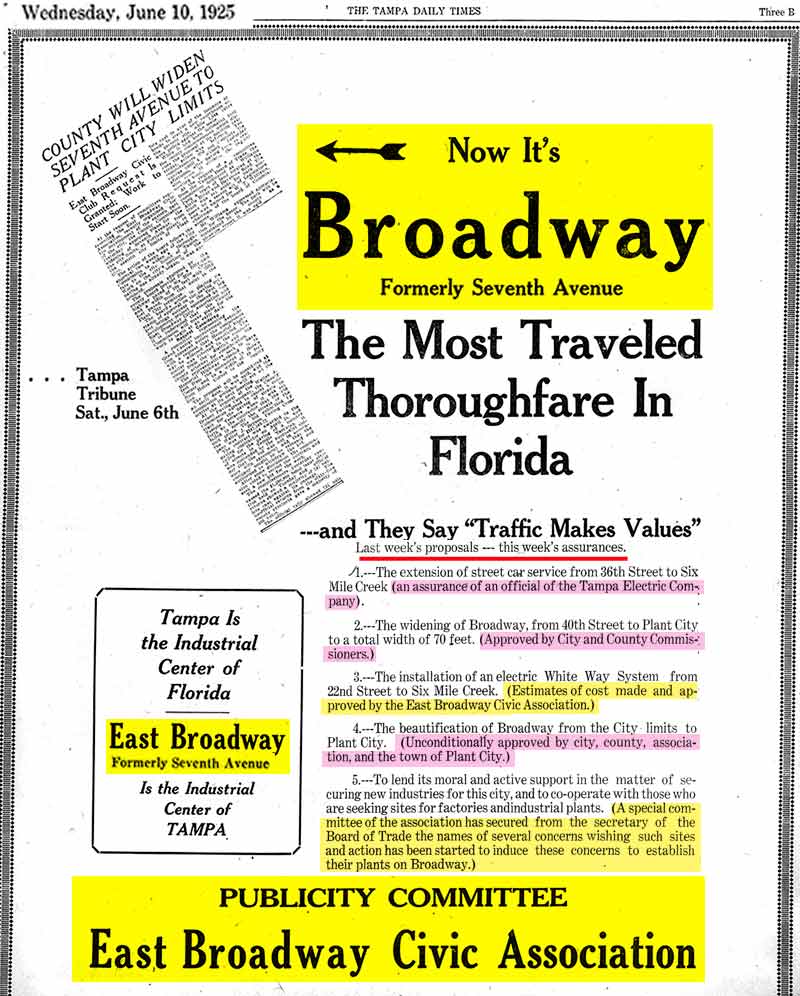
This ad would be a cause of confusion for years to come.
Many businesses along the heart of 7th Avenue began
advertising a Broadway address. Some advertised
both by including "Formerly Known As 7th Ave." and
others did not change.
PALACE
OF FLORENCE, DAVIS ISLANDS
In June 1925 Sempreviva, along with other fellow Italians of the community
led by Phillip Licata, formed
"Tampa Investment Co." to build an apartment building on
Davis Islands. The Palace of Florence drew its
inspiration from the Palazzo Vecchino in Florence,
Italy. Designed by Athos Menebun and M. Leo Elliot for
Philip Licata of the Tampa Investment Company, the
Palace of Florence incorporated a variety of materials,
such as terra cotta, wrought iron and stucco and boasted
a tower on each end of the front elevation.**
Elliot was a well-known
architect of many beautiful buildings in Tampa, and the building still stands today. Notice that Sempreviva's
brother-in-law Thomas La Pia was not a
stockholder in this corporation.
**By Rodney Kite-Powell, "Davis
Islands in the 1920s."
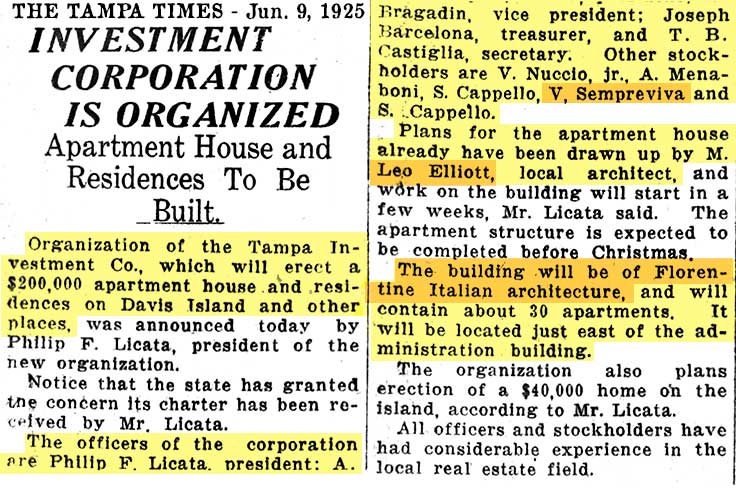
EAST TAMPA PROPERTY SALES PROFIT
SEMPREVIVA & ROGERS
"Seventh Avenue (Broadway)" was a hotspot of real estate activity.
Sempreviva and Rogers invested heavily in the area, claiming that
"Tampa is going to grow very quickly as an industrial city, and the
east part of the city is sure to be the industrial center."
Earlier, Sempreviva promoted east Tampa as a prime area for
residential development, pushing his Florence Villa community
fervently. Take one look at the area today and it's obvious that
the profits to be made were by selling to commercial industry and
not the suburban family community.
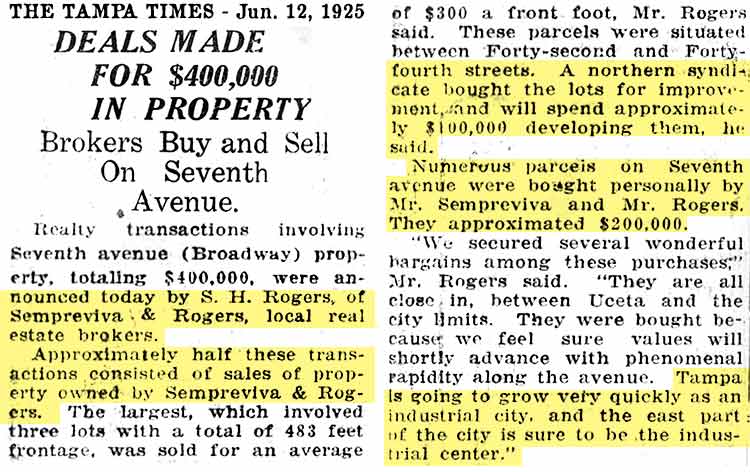
Apparently Vincent's brother-in-law, Thomas La Pia,
was no longer in business with him and he was now operating as "Sempreviva
& Rogers." Thomas La Pia would soon return to New York.
The firm of Sempreviva & Rogers devoted the majority
of their attention to acquiring properties along E. 7th Avenue, in
the area where the thoroughfare was also named "Broadway." The
planned to establish a new office in downtown in the next few days.
Sempreviva planned on obtaining big investors from New York City to
develop Tampa.
Rogers was a long time resident of Tampa and was well
familiar with it. He had acted as a trustee of numerous
bankruptcy cases and practiced law with the firm of Gunby & Gibbons.
He was also chairman of the executive committee of the East Broadway
Civic Association.
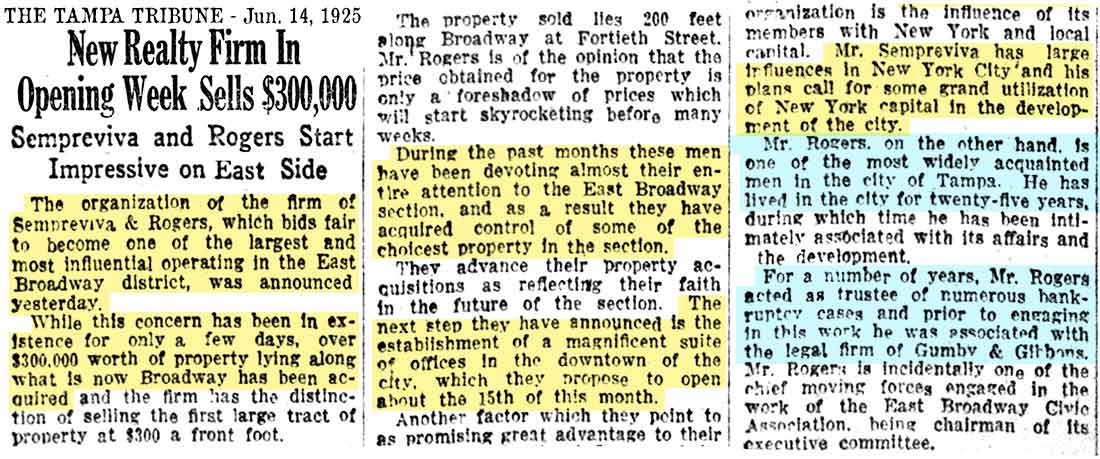
R. C. Dotson was the chief "money man" of developing
the East Broadway area. He was president of the Florence Villa
Development Co. and owner of a large amount of property along East
Broadway. Dotson was a well-known and successful investor in
the Lake County and Orange County area, having influenced thousands
of northern investors and home seekers to that area in the past
couple of years. These were responsible for starting the big
produce farms that made the area rich and famous. Dotson
personally funded a massive advertising campaign in the north
promoting the central Florida area for the past eight years.
Dotson had partnered with J. H. Letton, a successful realtor in the
area for over 10 years.
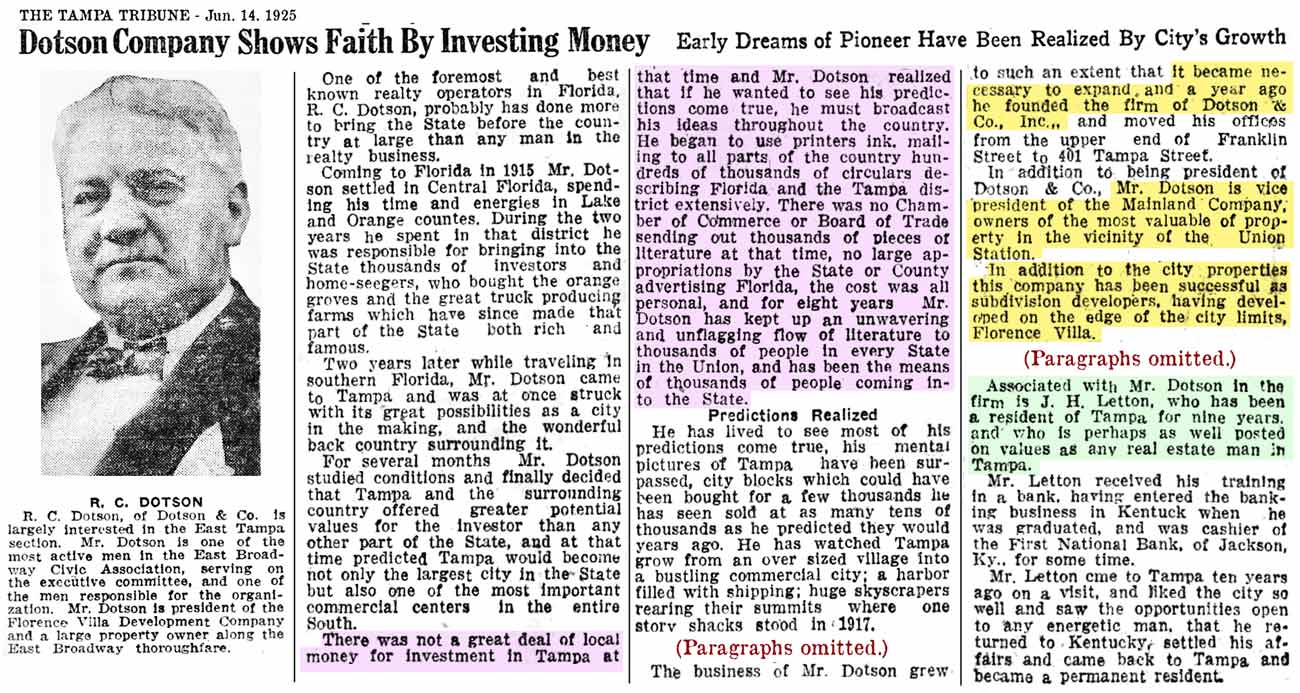
It was in Florence Villa
where Vincent built his family a large home and financed the
construction of homes and other buildings in that area. This
article is filled with glorifying descriptions of
Florence Villa, and its raging success. Starting
off with sixty acres, it quickly acquired forty more
acres all of which had been transformed into a "place of
magnificence far exceeding the expectations of the the
developer himself."
The article ends with
Sempreviva's northern experience and once again
erroneously claims that Samuel Greason Jr. was a
professor of the NY City law school. It claims he
also has some sort of association with the former
governor of Pennsylvania, who was also the ex-president
of National League baseball, and hotel builder Charles
McAlpin.
|
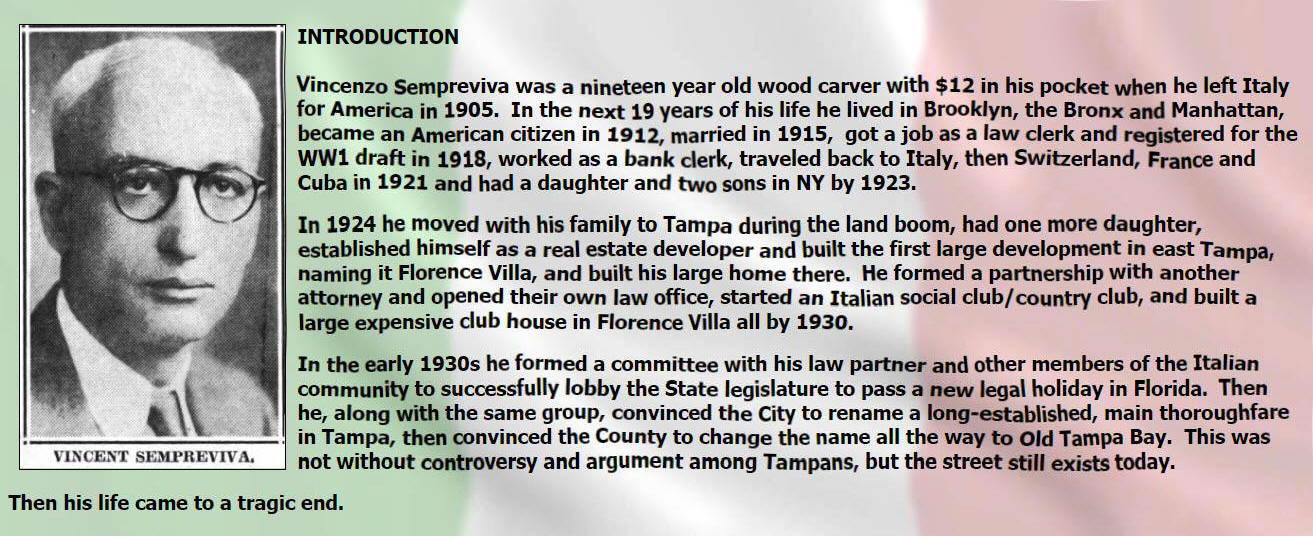
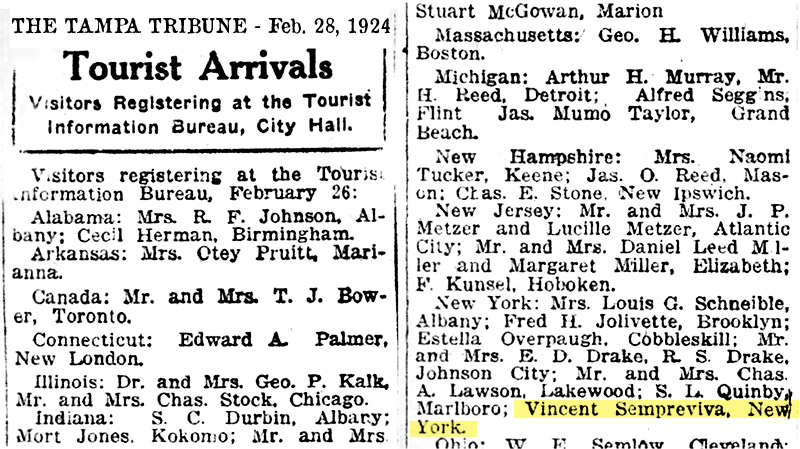
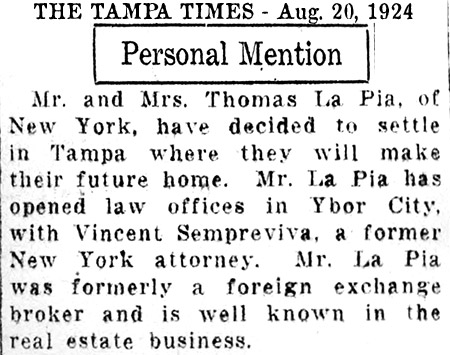

























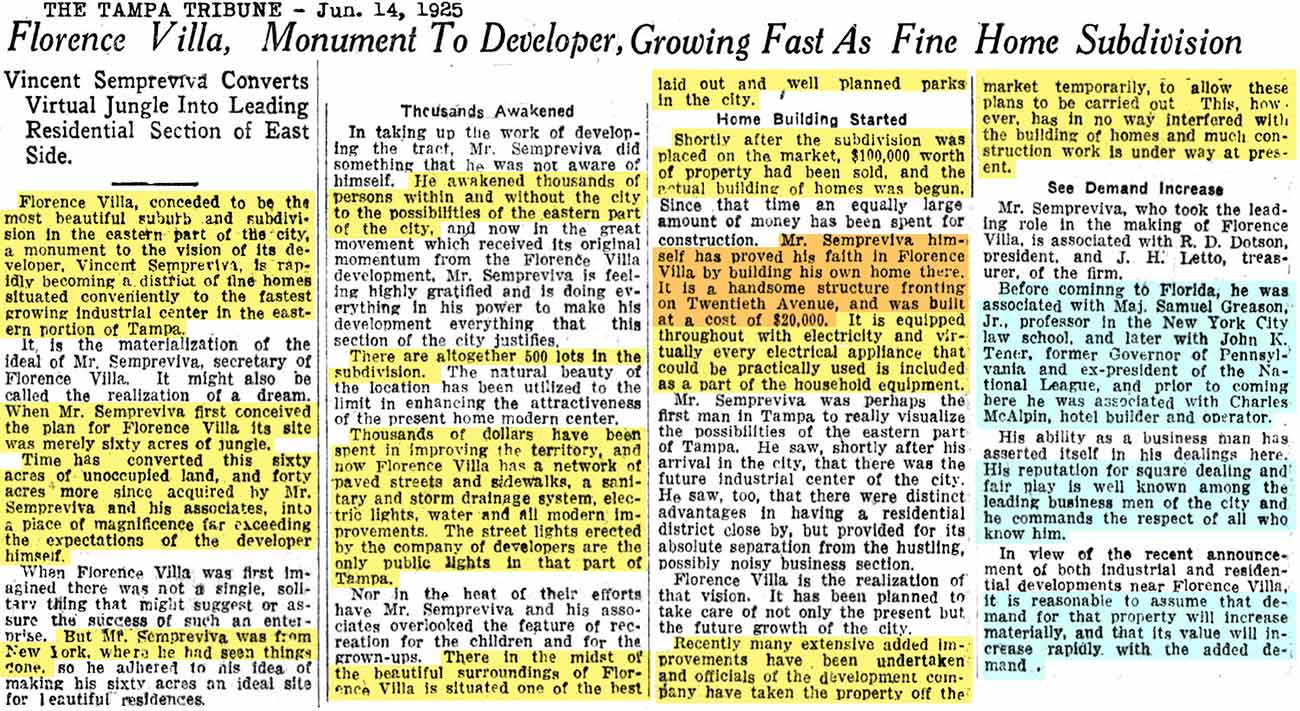
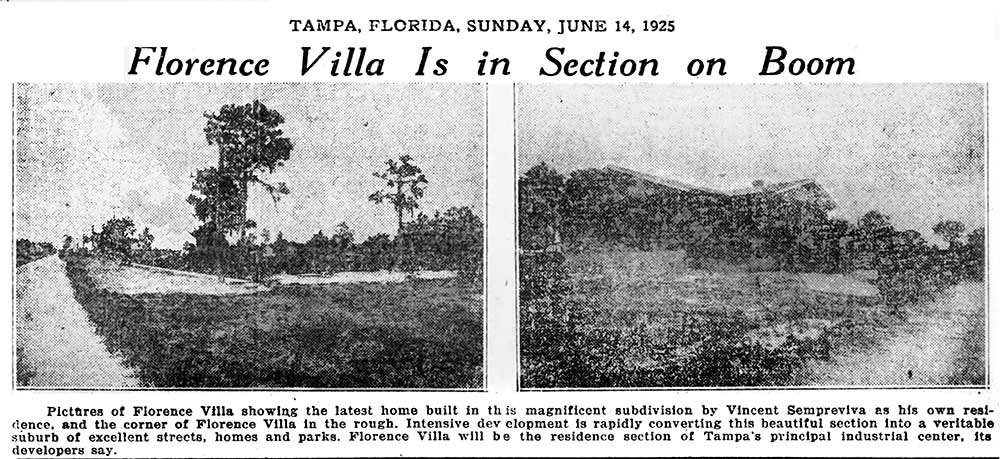
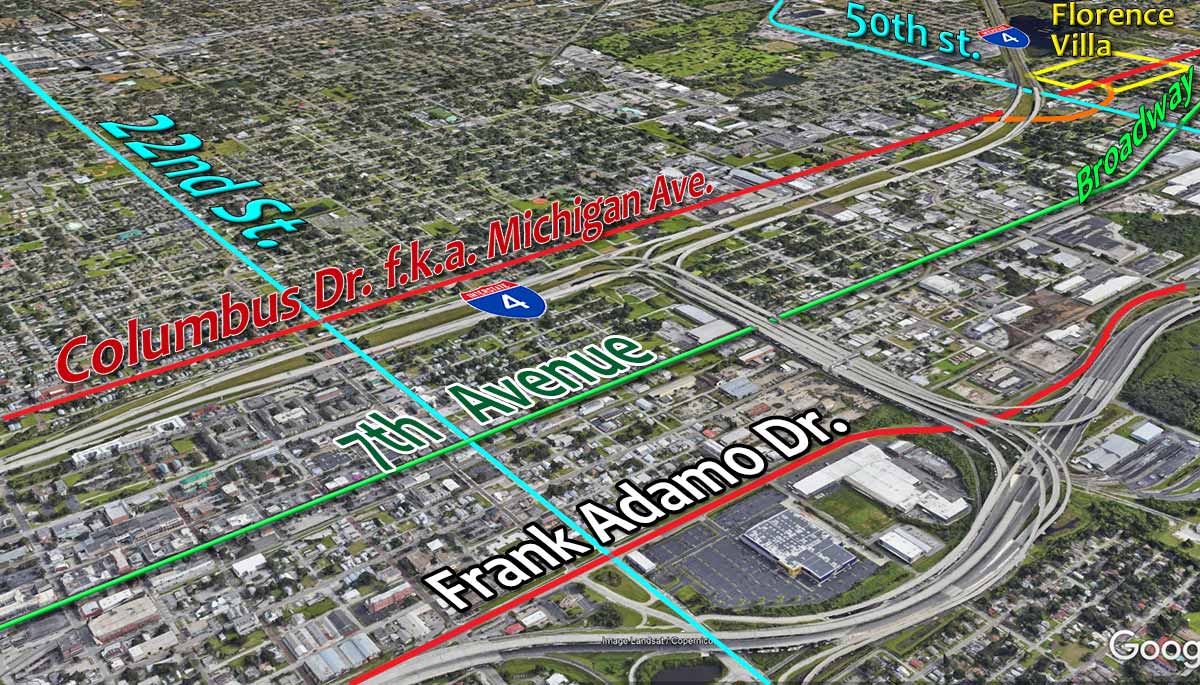
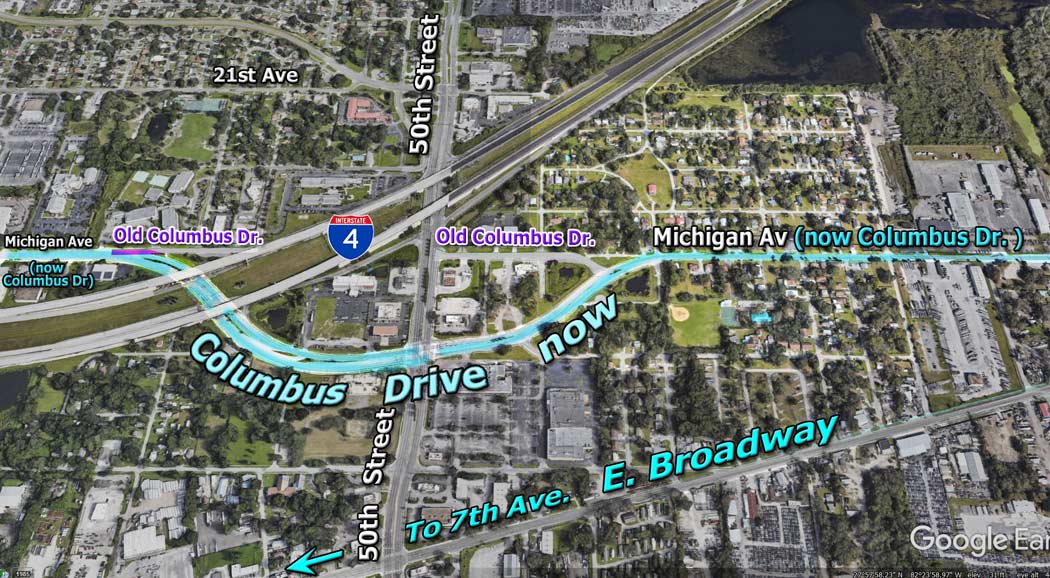
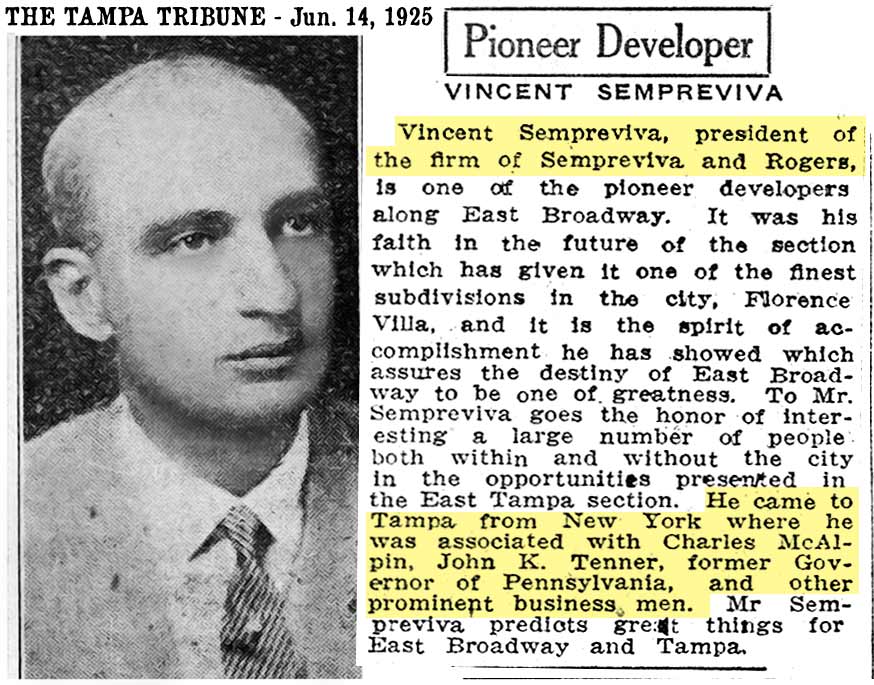
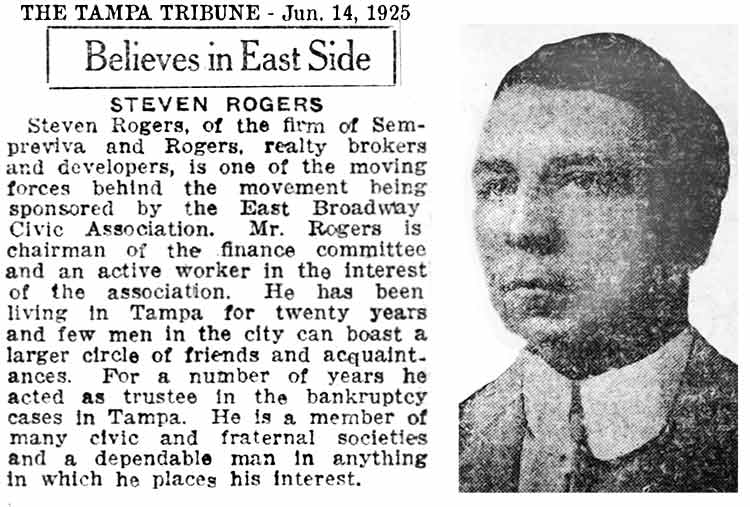
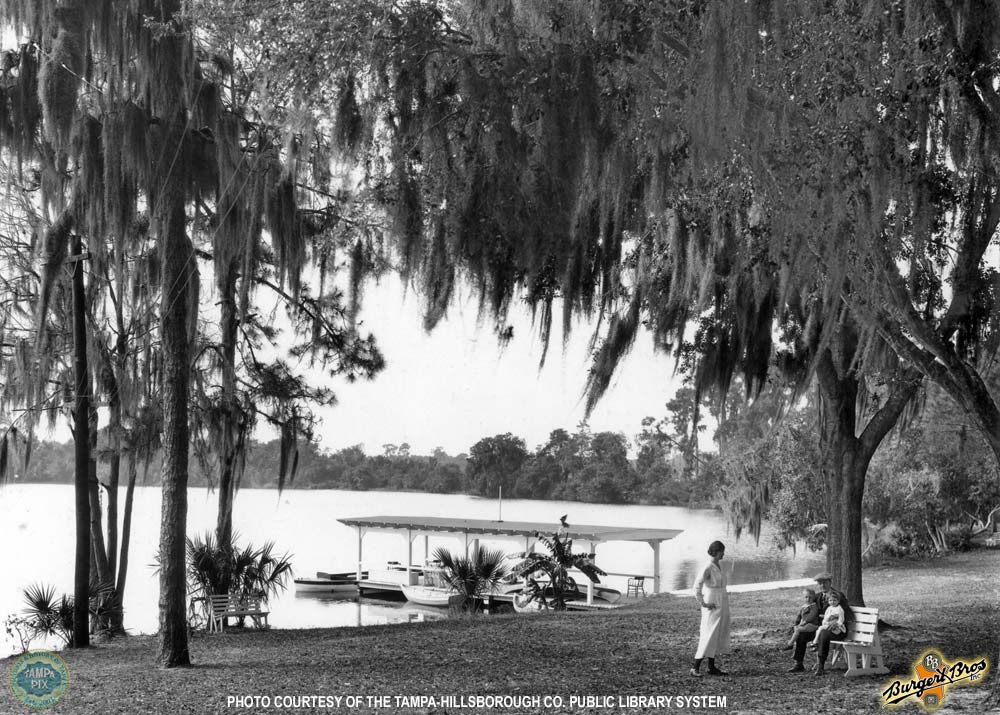
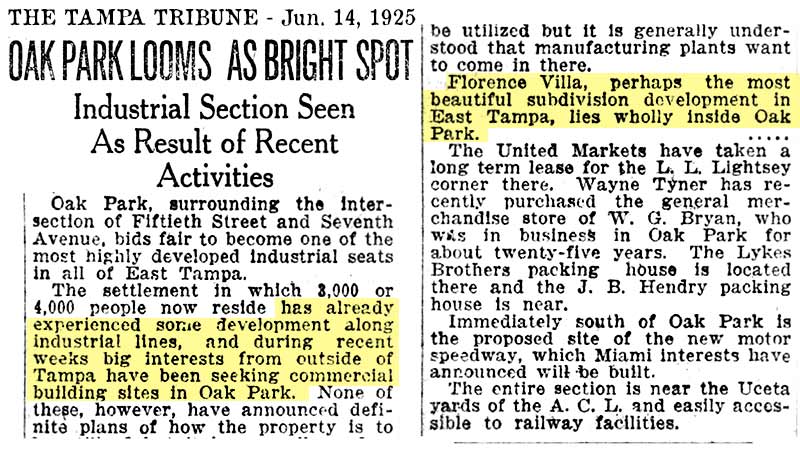
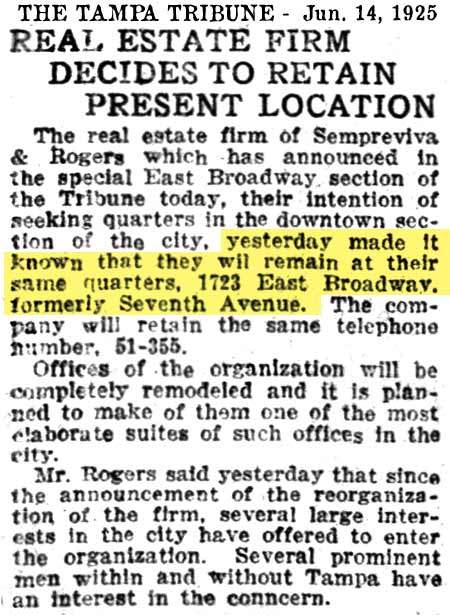
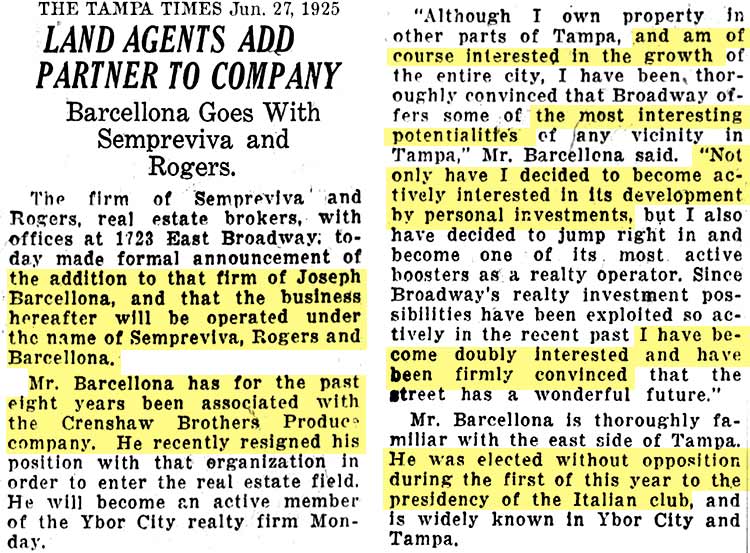
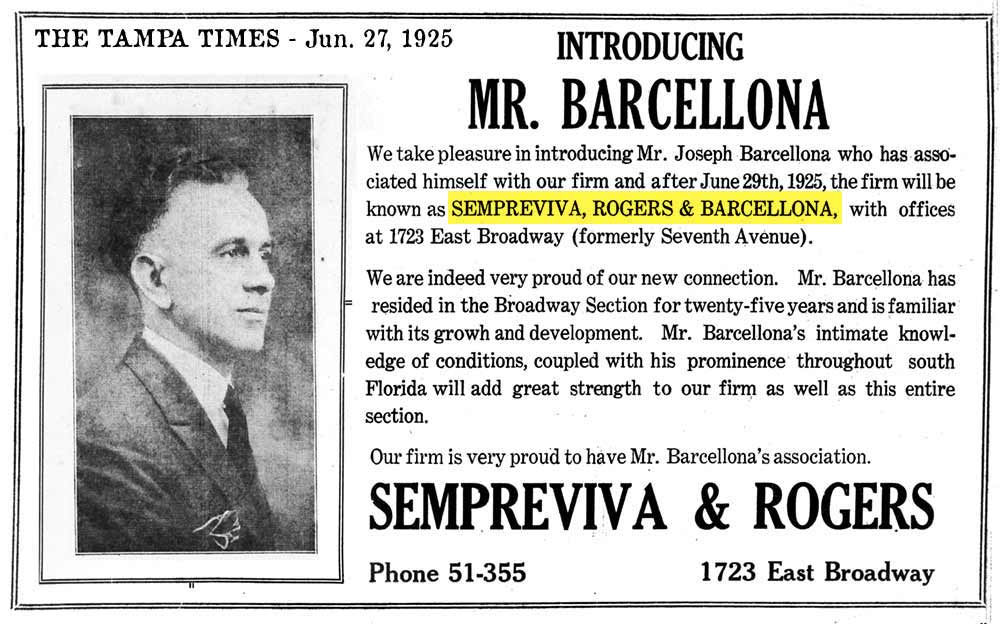
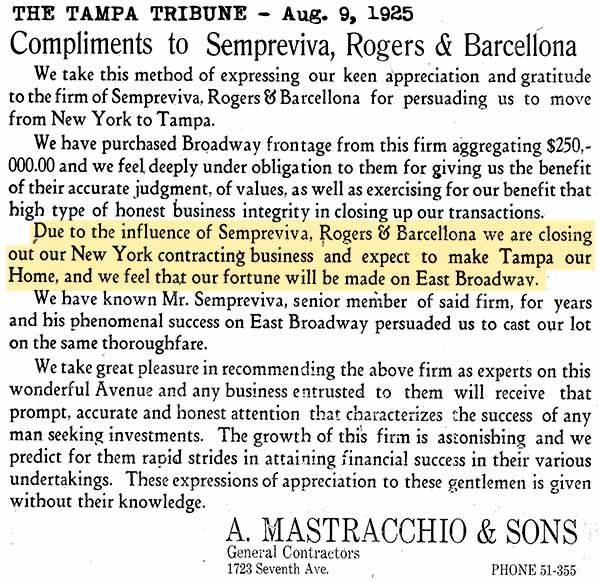
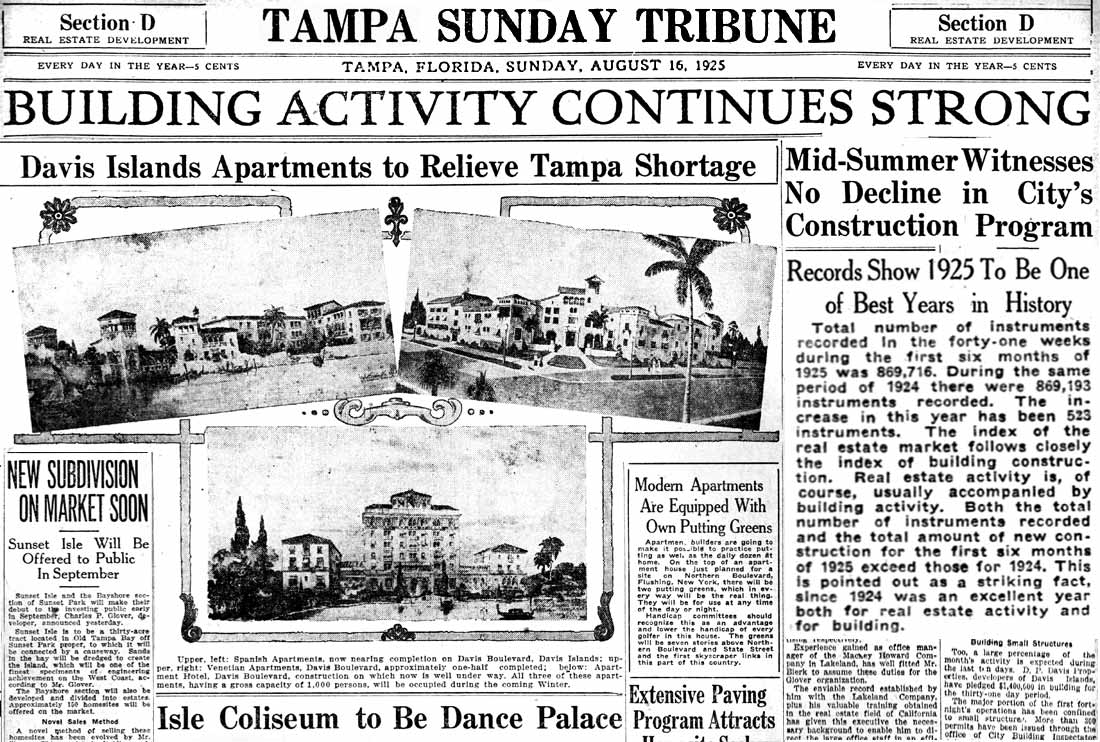
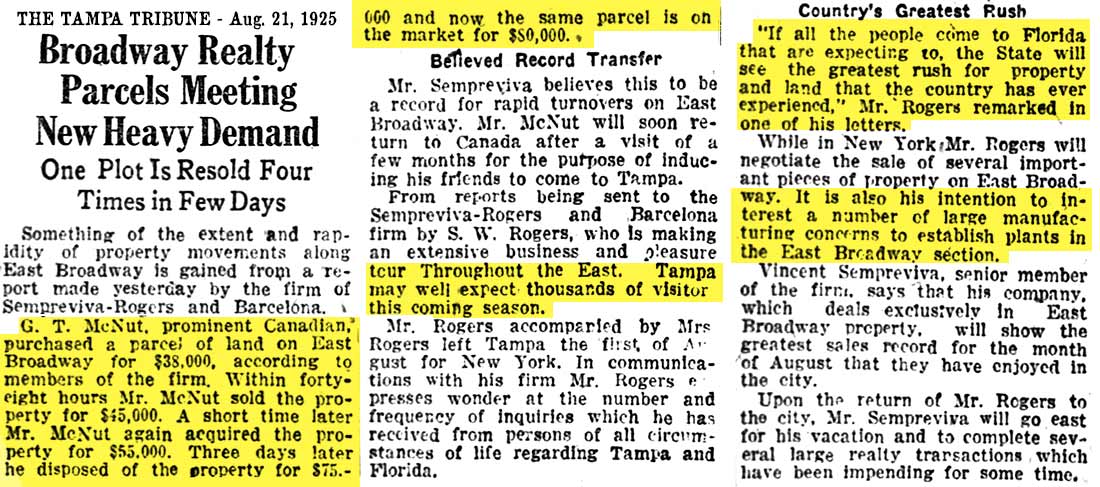
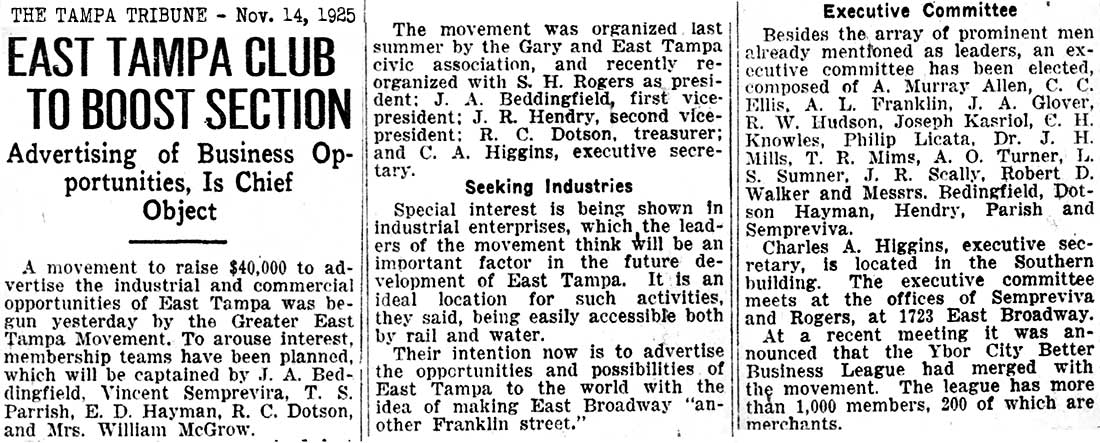
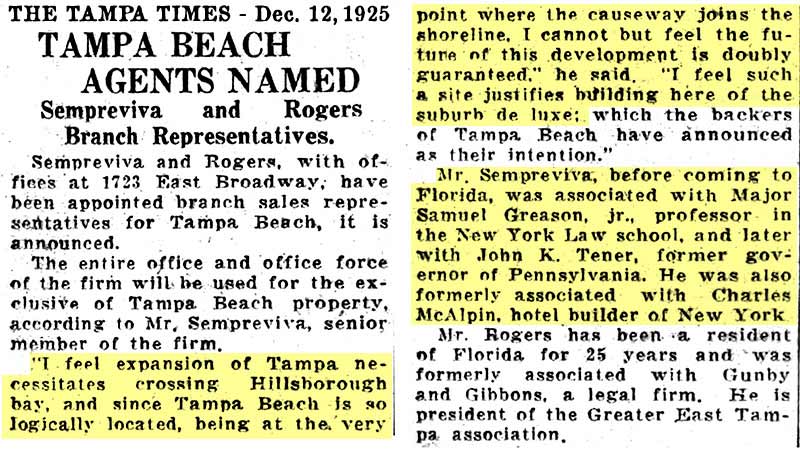
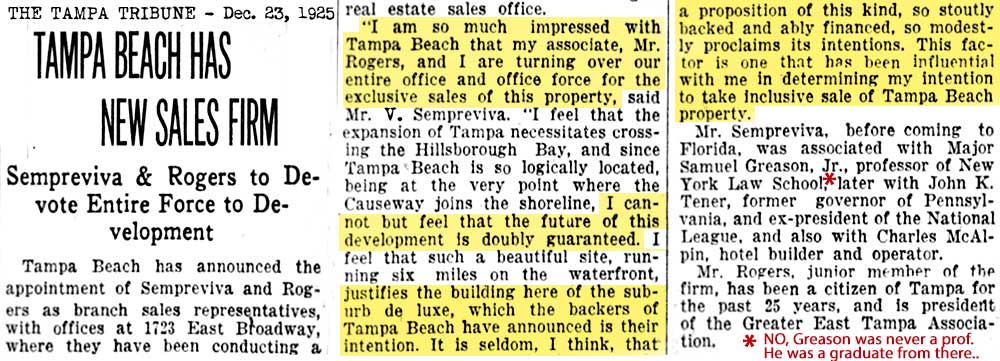
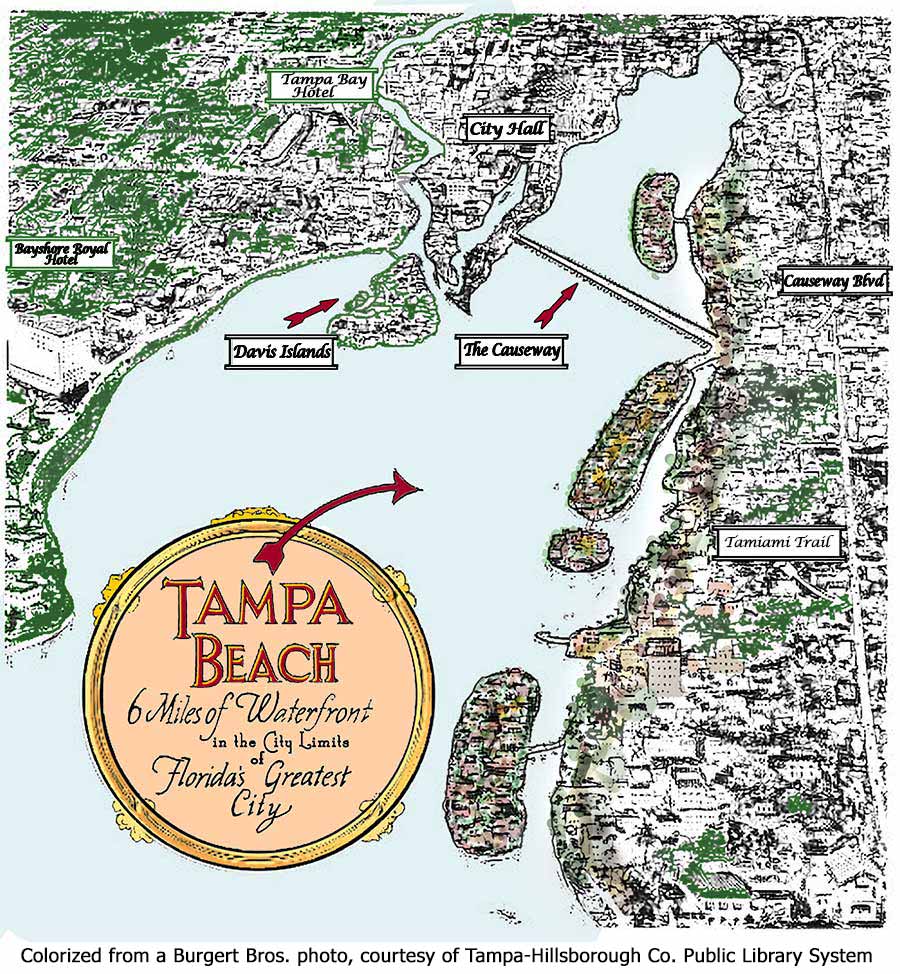
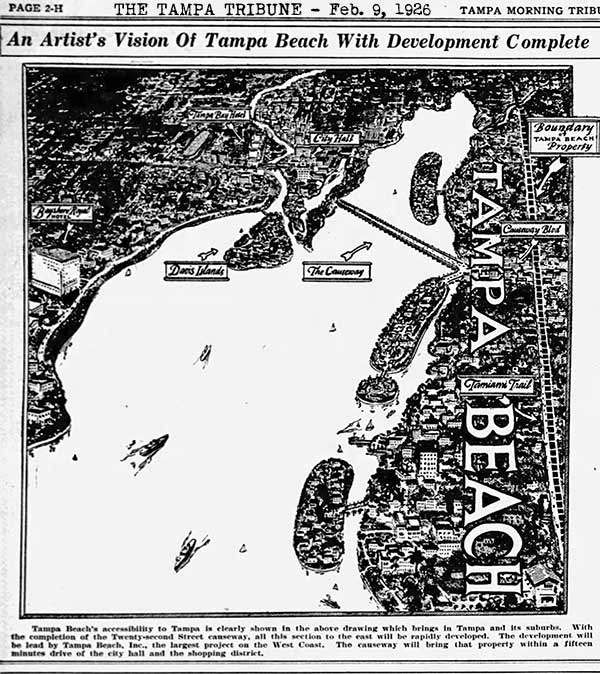 Notice
on the illustration at left that the coast of the
mainland does not appear to have plans to be dredged and
filled and still looks like the approximate same
coastline as in the 1892 map presented earlier here.
The only filling apparent here are the four islands in
the bay.
Notice
on the illustration at left that the coast of the
mainland does not appear to have plans to be dredged and
filled and still looks like the approximate same
coastline as in the 1892 map presented earlier here.
The only filling apparent here are the four islands in
the bay.